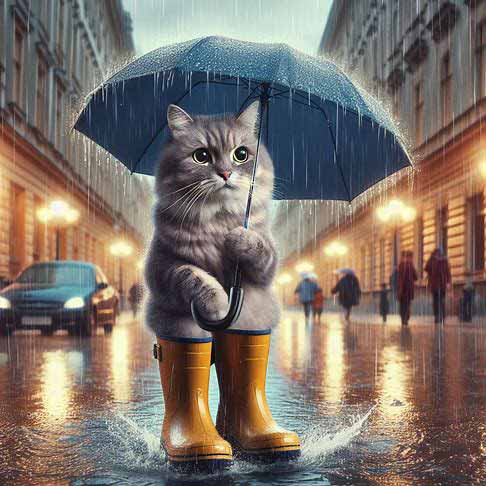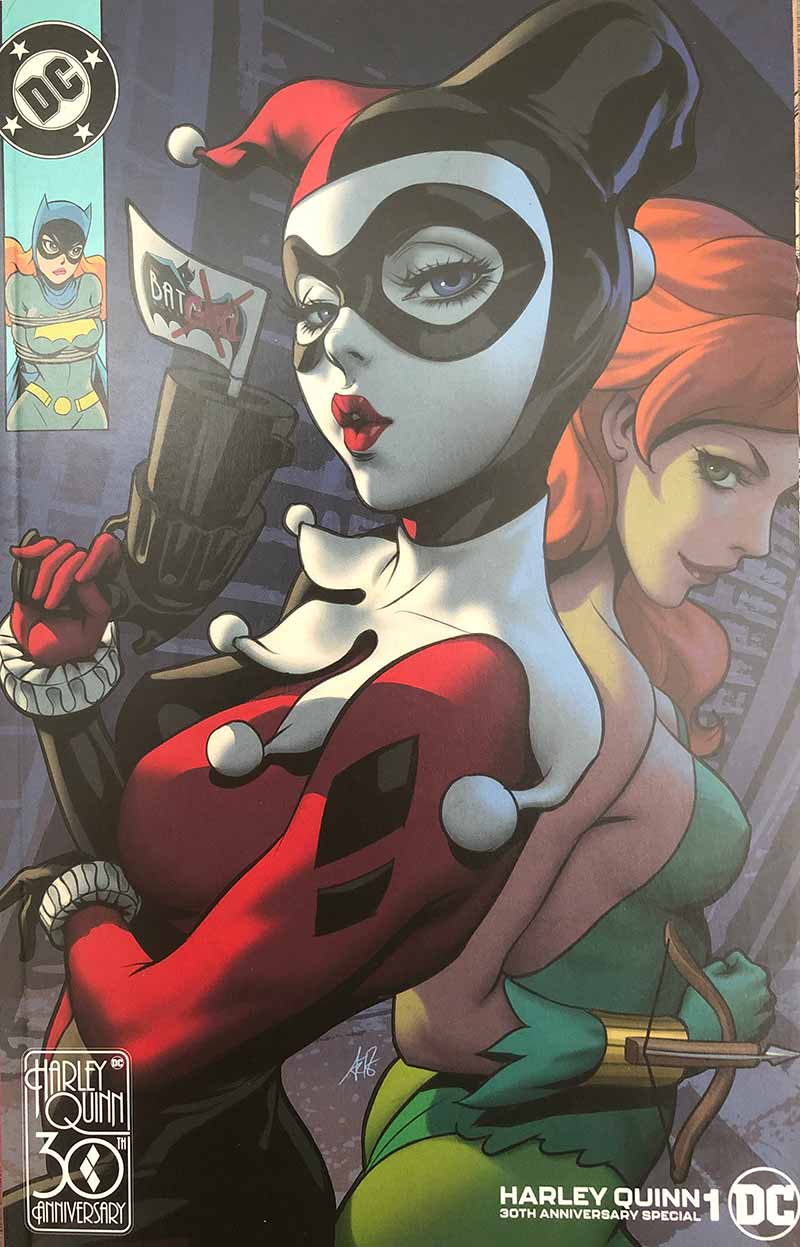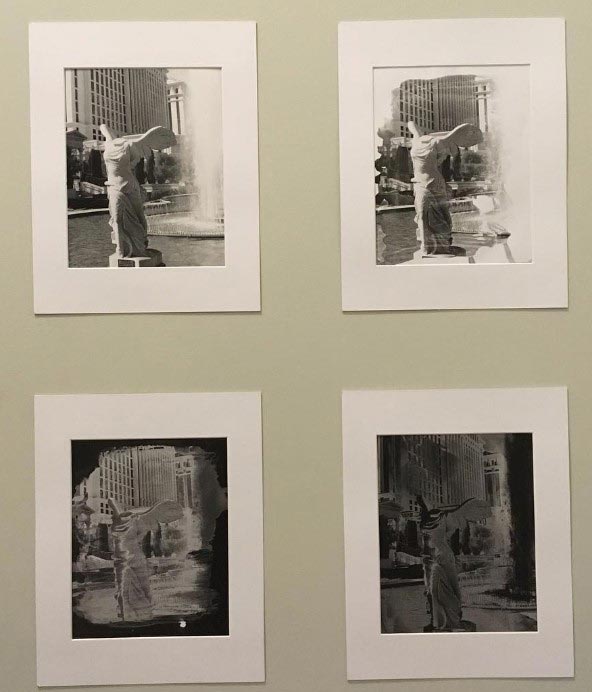Let's have a chat about taking your digital marketing to the next level
Should You Use AI-Generated Images for Your Marketing?
There’s been a lot of chatter around AI-generated images for the last year or so with the introduction of DALL-E and Midjourney and it’s been a mixed bag of reactions and responses. As an artist, I want to launch it into the sun and never look back, but for the age-old tenet of adapt-or-die, and for the purpose of this blog, let’s look at things from a marketing perspective.
I should note that, given my aforementioned feelings towards AI image generators, it makes sense I would be the one to write the cons side of this argument but, who then would tackle the pros? For that, I’ve turned to an unlikely ally and consulted ChatGPT for its opinion on AI-generated imagery, questioned its responses, and essentially had a debate with an AI about AI. What you’re about to read is the result of that debate alongside discussions with local graphic designers and artists.
What is an AI Image Generator?
A high-level look at an AI-generated image is any artwork that was created through the use of artificial intelligence programs. Simply enter a text prompt and wait for the image to be generated. However, these programs need to be trained on something to know, for example, what “a cat wearing rain boots and holding an umbrella” is supposed to look like. This is where things start to get sticky, as the art used for training had to have come from somewhere, and not all of it was from art in the public domain. While that is an issue that we won’t be discussing much further here because we are marketers and not lawyers, it is something worth keeping in the back of your mind should you be considering using an AI image generator for your company’s purposes.

Asking an AI for the Pros of Using AI Imagery in Marketing
Maybe it’s a symptom of working from home for the past four years, but I sometimes find myself asking ChatGPT for its opinion on things as if it were a human coworker. To be clear, I’m not using AI to do my work, or even write this blog, but I did want to know its thoughts, as an AI, on AI use about this specific topic. When asked, ChatGPT came up with six benefits that AI-generated imagery can offer to the marketing industry.
Cost-effectiveness
You can create high-quality images without incurring the costs traditionally associated with using photographers, models, or graphic designers. No one is charging an hourly rate and most AI image generators have free versions that you can use.
Customization
You can tailor your imagery for specific target audiences to deliver more relevant and engaging content and lead to higher conversion rates.
Speed and Scalability
AI generators produce content at scale, allowing for a lot of images to be produced quickly, and for large amounts of content to be produced in a short amount of time with the tweak of a prompt.
Consistency
Ensure consistency across different materials while maintaining a cohesive brand image across all marketing platforms.
Creative Exploration
AI tools enable marketers to experiment with different visual styles and explore new creative concepts based on their input prompts. ChatGPT feels that this could lead to more innovative campaigns.
Data-Driven Insights
Images created with AI tools can be analyzed with machine learning algorithms to gain valuable insights into consumer preferences, trends, and behaviours which can then inform future marketing strategies and campaigns for more effective targeting and messaging.
One could easily dismantle many of these arguments by bringing up the fact that large marketing companies have been using focus groups and finding success for decades before AI was invented for their data-driven insights, branding guidelines help ensure consistency, and graphic designers have their tools and tricks for ensuring scalability and speed, albeit not as quickly as an AI generator would be able to do it. You’ll notice I’ve left out cost-effectiveness and creative exploration, don’t worry, those will come up again later.
Bringing in a Graphic Designer for Their Thoughts
I thought it best to also involve a graphic designer in this debate and consulted a local artist and graphic designer to get her thoughts on the use of AI in her industry and how, if at all, she might use an AI image generator in her practice. She’s asked to be kept anonymous in this article, so humour me and my overuse of pronouns.
She states that she’s used it to replace Google in a few ways, such as brainstorming concept ideas when a client has no direction and she needs to come up with a variety of ideas based on a single theme. She’ll still do her sketches based on the concept, stressing that “the images generated by AI are never useable”. She will also use AI to generate textures if she doesn’t have what she’s looking for in her repository of design elements and will then clone or stamp the texture into her designs.
Another way AI generators have saved her a bit of time has been in choosing colour palettes. She’ll upload her sketch into the program and give the generator direction on colour palettes for a simple way to see how different colours or tones affect the design, though they tend to be lacking so she will use her own colours for the final design. Finally, she has used an AI generator in a single complex project with a tight turnaround to generate small details within the design, though they largely had to be redrawn.
Overall she’s found that AI can save a little time, though finds the benefits of it to be negligible, but is keeping up with it to stay current and informed on where it’s going (circling back to the adapt-or-die principle). She feels that, if anything, it is doing more harm than good and that it was irresponsible to release AI to the general public at this time.
These uses of AI generators for graphic design in marketing do seem to come with a lot of caveats, however, she did leave me with one final benefit that I couldn’t help but applaud:
“I suppose one other benefit to AI is that it is a good litmus for if a client is a good fit for my work. If someone wants AI, I know they care more about their bottom line than quality, so will likely be a bad fit for my practice where I choose clients who value both my technical skill and practical knowledge.” You’ll have to take me at my word when I say that this graphic designer is worth every dollar you spend on her work.
The Cons of AI Images from the Perspective of Artists
Though this article thus far hasn’t addressed too many strong points in favour of AI image generators, let’s take a closer look at some of the cons. Unlike the tidy list that ChatGPT was able to provide for the list of pros for AI images, talking to humans about AI art will always lead to long rants, so please bear with me.
Lacking a Unique Human Touch
By ChatGPT’s own admission, AI lacks the emotional depth, context, and nuance that human creators bring to their work. While artists and graphic designers can infuse their creations with unique perspectives, storytelling elements, and personal expression that will resonate with audiences on a deep level, AI image generators can merely respond to a prompt based on predefined parameters.
Public Perception
Consulting once more with our graphic design source, she makes a point that businesses should consider when it comes to their marketing – public perception.
“Typically with illustration and design, you focus on the main details but, to keep on budget, some parts of an illustration might be looser. Now I worry that if everything isn’t perfect, people will say that it’s AI, so I end up having to spend longer on what should have been a simple job because I was scared that someone would tell my client their [product images] were AI. And, if the client didn’t have the budget for it, I’d have to eat that loss because I was worried about mine and my client’s reputation.”
You may wonder, “Who cares if it was an AI-generated image?” and the answer might surprise you. The sentiments around AI art are mixed no matter where you go. Within Snaptech alone are people who openly use AI-generated imagery at one end of the spectrum and others who will send you articles about how AI-generated imagery has been used as yet another method of bullying among teens. Not only that but recall back at the beginning when I mentioned that not all of the images used to train these AIs were in the public domain. Yes, that means that a lot of these images and art styles were taken without the artist’s permission. You can argue all you want about human copycats and art style thieves but at the end of the day, riding on the back of someone else’s talent and stealing art is for the morally bankrupt.
Risk of Boycotts/Potential Loss of Clients
When it comes to AI-generated art, there’s an overwhelming sentiment that anyone using it should be boycotted. Now, of course, this opinion isn’t shared by everyone, and many people do view AI advancements as a cool new tool, however, there will always be the risk of losing current or potential clients when one uses AI in their business. Within my creative circles, it recently came up that a fountain ink and pen shop was using AI to help with their marketing campaigns and even that seemingly harmless choice resulted in the loss of at least four customers, which doesn’t include anyone they then spread the word to. Sure, that might seem like a small loss at this scale, but there is no way to tell exactly how many others share these feelings.

Lack of Innovation and Creativity
Despite ChatGPT wanting to believe that AI image generators can lead to innovations and more creative campaigns, my sources disagree. As AI generators require source materials to be fed into them for their learning, they can only build on what others have already done. Sure, you can prompt whatever you like into it, but you’ll still need a human’s work to get things started. If the saying “those who can’t do, teach” is correct, can we conclude that those who can’t create art, prompt?
In preparation for writing this article, I decided to open the can of AI art worms in Artist Alley at the most recent FanExpo. I won’t add to my word count the overwhelming amount of negative sentiment towards AI art that I received upon asking for various comic creators’ thoughts and opinions, but I would be remiss to not include the thoughts of local artist Max Dunbar, comic artist for DC’s Batman Beyond and concept designer for HeroQuest and Wizards of the Coast (Dungeons & Dragons). He stated that AI-generated art lacks empathy and is disingenuous to human creativity. Indeed, it is a slap in the face to every artist who has spent decades learning anatomy, perfecting and constantly updating their style, and countless hours submitting portfolios for review for the chance to break into their industry.
That is not to say that these artists cannot compete with an AI-generated image because that image is better, no, that is because these AI art-creating machines are trained upon their stolen artwork. Why pay hundreds of dollars for an Artgerm print when you can have Midjourney create exactly what you want in his style for free?
Ethical Considerations
To quote ChatGPT, “It’s essential to consider the ethical implications of relying solely on AI-generated imagery, particularly concerning issues such as intellectual property rights, cultural representation, and algorithmic bias. Human oversight and intervention are necessary to ensure that AI-generated content aligns with ethical standards and respects diverse perspectives and sensitivities.”
By its own admission, AI generators are biased. This is because AI generators are trained on historical data and largely by white men. Despite this article being written in 2019, these statistics have remained consistent according to a recent webinar hosted by Girls In Tech.
In addition to these ethical considerations, one must also take into account the moral implications of using stolen artwork to save money by not hiring an artist (whose work you may well be stealing in the process). There’s also something horribly dystopian about an AI taking creative work away from people.
Final Thoughts from a Former Art Student
As an art school graduate-turned-marketer who was doing experimental darkroom photography during the birth of Instagram, it makes sense that my gut reaction to AI image generators would be one of heavy suspicion and distrust. I’m a cynic when it comes to the idea of using AI to save money. That’s all well and good, but the idea of firing your graphic designer or asking them to downskill and become a prompt generator for your shiny new toy smacks of corporate greed whilst likening the world to that of Vonnegut’s Harrison Bergeron.
In my debate with ChatGPT about the moral implications of choosing AI over artists and graphic designers, it emphasized that “it’s crucial to recognize that it’s not a replacement for the creativity, expertise, and artistic vision that professionals bring to their work,” and we agreed that using AI image generators as a complementary role alongside artists and graphic designers would be best. As you’ve already read from our anonymous graphic designer, the current integration with AI images is a little ways off from being a perfect partnership, but with the almost daily advances in AI, that reality might not be too far away.
While I still agree with local artist Robin Thompson (AKA Fun Men Press)’s opinion of “We don’t need it”, at the end of the day, it is ultimately up to the individual whether or not they choose to use AI image generators for their company’s marketing. However, I feel the following guidelines should be in place to “reduce the ick” of that choice.

Use At Your Own Risk
As mentioned previously, the risk of losing current clients or alienating potential ones is very real. Be aware of this when introducing AI-generated images into your marketing strategy and consider running engagement tests alongside traditionally created materials to gauge your audience’s response.
Be Aware of What’s Happening
AI image generators are consistently in the news concerning how they were trained and the effects of that training on artists. Try to stay updated on what’s happening in the news so that you can be prepared should public sentiment further sour toward AI art.
Take Responsibility for Repercussions
Be prepared to own your choice to use AI-generated images. If someone accuses your company of using AI for marketing, admit it, own it, and move on. Don’t argue with people raising concerns but try to engage thoughtfully and consider any constructive criticisms.
Be Ethical with Your Use
While it is preferable to support graphic designers and stock image artists, if you’re going to use AI imagery, you should at the very least not try to mimic specific artists’ styles. If you want them, work with the artist, don’t rip them off.
My Actual Final Thoughts
The intersection of technology, creativity, and ethics is complex and multifaceted, particularly in fields like art and design where human expression and interpretation play central roles. It is important to respect and support artists and their work, both culturally and economically. As technology continues to advance and AIs continue to be refined, it’s essential to approach its integration into creative industries with sensitivity and consideration for the human element. While AI can offer opportunities for innovation and efficiency, it should not come at the expense of devaluing or marginalizing the contributions of artists and graphic designers.

